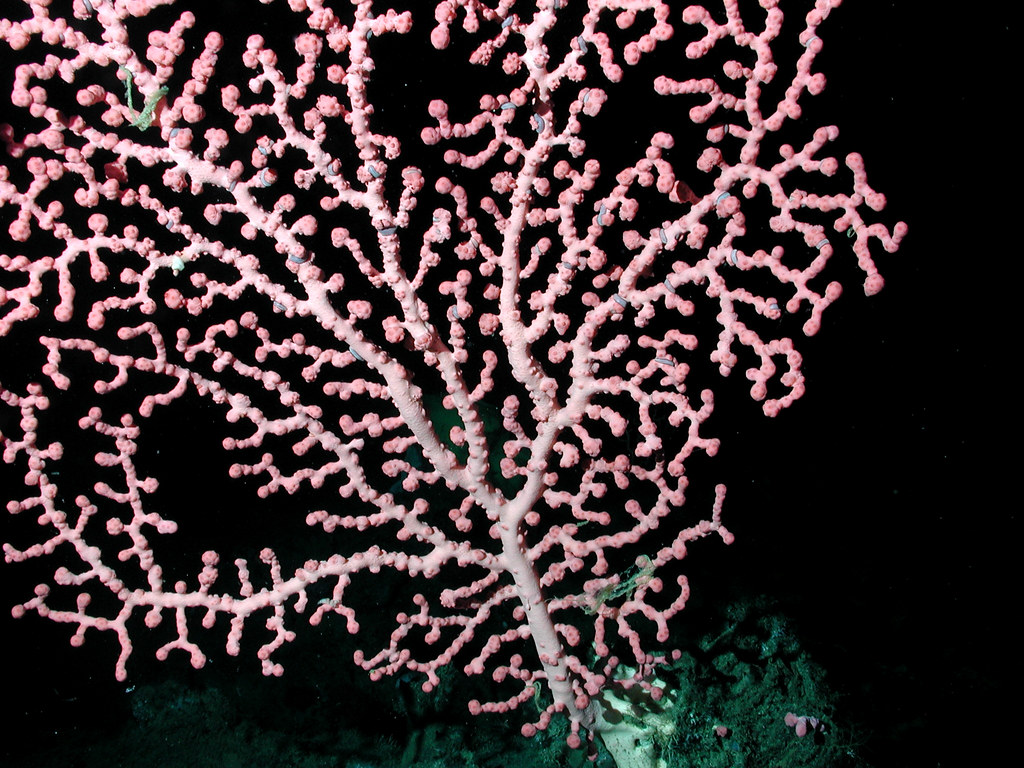美國地方漁業管理委員會近日首度核准一項「深海珊瑚修訂案」,納入2015年的鯖魚、魷魚、鰈魚漁業管理計畫,指定限漁區,以保護深海珊瑚免受底拖漁具的傷害。
大部分的深海珊瑚生長緩慢而且脆弱,容易被底拖漁具破壞。美國國家海洋大氣管理局(NOAA)不惜砸重金研究,經過三年的調查,定位珊瑚棲地,舉辦工作坊與漁民溝通,劃出禁止底拖的地區和界線。該保護區位於美國大西洋中部外海,面積超過3萬8000平方英里,約合9萬8000多平方公里,相當於2.7個台灣。
NOAA和中大西洋漁業管理委員會(Mid-Atlantic Fishery Management Council)合作,將過去觀察到有深海珊瑚生長、或是推測很有可能生長的地區規劃為「深海珊瑚區」加以保護。
根據美國海洋漁業管理綱領——《麥格紐森─史帝文斯漁業養護管理法》(Magnuson- Stevens Fishery Conservation and Management Act),地方漁業管理委員會有權指定限漁區,以保護深海珊瑚。不過,中大西洋漁業管理委員會是美國八個地方漁業管理委員會中,第一個行使此職權的委員會。
保護區包含大陸棚沿線已知或很可能有珊瑚生長的水下峽谷或斜坡,以及不確定是否有珊瑚、但漁業作業較少的較深水域。
美國國家海洋大氣管理局(NOAA)大西洋地區棲地保育部的史蒂芬森(David Stevenson)說,由於深海珊瑚生長在難以到達的深海,尋找和研究成本非常高。儘管如此,NOAA近期仍砸重金研究大西洋沿岸的深海珊瑚。根據預測深海珊瑚最適棲地的模擬結果,NOAA在2012到2015年間進行一系列的調查,定位珊瑚棲地,並評估分佈與數量。最後綜合模擬結果和調查結果規劃出禁止底拖的地區和界線。
漁民們雖同意珊瑚應受到保護,但也不願意放棄大陸棚外側的重要漁場。委員會為此舉辦工作坊,試圖達成共識。
在科學家和棲地管理者的協助下,歷經談判和妥協之後,企業和環團終於找出雙方都可接受的保護區範圍。
保護區內禁止使用任何會接觸海床的漁具,包括拖網、桁網、底棲延繩和魚籠。但休閒捕魚、不接觸海床的漁具、美國龍蝦籠和深海紅蟹籠不在此限。
Working together, the National Oceanic and Atmospheric Administration, NOAA, and the Mid-Atlantic Fishery Management Council have designated a large offshore area in the Mid-Atlantic Ocean for the protection of deep-sea corals.
The new coral-protection zone encompasses more than 38,000 square miles of federal waters off the Mid-Atlantic coast, an area roughly the size of the state of Virginia.
The Council approved the Deep Sea Corals Amendment to the Mackerel, Squid, Butterfish Fishery Management Plan in 2015 in order to protect deep sea corals from the impacts of bottom-tending fishing gear in the new Frank R. Lautenberg Deep-Sea Coral Protection Area.
Most deep sea corals are slow-growing and fragile, making them vulnerable to damage from fishing gear that contacts the sea floor. This final rule designates a large “deep sea coral zone” in areas where corals have been observed or where they are likely to occur.
Under the Magnuson-Stevens Act, regional fishery management councils have the authority to designate zones where fishing may be restricted to protect deep sea corals.
Although corals have been protected as essential fish habitat, the Mid-Atlantic Fishery Management Council is the first of the eight U.S. regional fishery management councils to use this new discretionary authority.
The Frank R. Lautenberg Deep Sea Coral Protection Area encompasses areas of known or highly likely coral presence in underwater canyons or slope areas along the continental shelf edge, as well as deeper areas where the presence of corals is uncertain, but where little or no fishing effort currently occurs.
Because deep-sea corals live in very deep, hard-to-reach places, finding and studying them is very expensive, says David Stevenson of NOAA’s Greater Atlantic Region, Habitat Conservation Division.
Still, on the U.S. Atlantic coast, deep-sea corals have been the subject of a recent and intensive NOAA-funded research program.
Based on the results of a model that predicts the locations of the most suitable coral habitats, NOAA conducted a series of research surveys during 2012-2015 to map coral habitats and assess their distribution and abundance, said Stevenson.
The data provided by these surveys and by the predictive model were used to determine what areas should be closed to bottom trawling and where the boundaries for those areas should be.
Faced with concerns from fishermen, who agreed that corals deserve protection from fishing, but did not want to give up important fishing grounds on the outer shelf, the Council organized a workshop to try and resolve their differences.
After negotiation and compromise, with some help from scientists and habitat managers, industry spokespeople and representatives of the environmental groups agreed to a new set of area boundaries that were approved by the Council two months later.
Within the protected area, commercial fishermen are prohibited from using most types of bottom-tending fishing gear such as trawls, dredges, bottom longlines, and traps.
The rule does not apply to recreational fishing, commercial gear types that do not contact the sea floor, or the American lobster trap fishery. An exemption is also provided for the deep sea red crab commercial trap fishery.
※ 全文及圖片詳見:ENS







